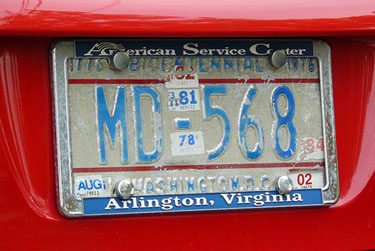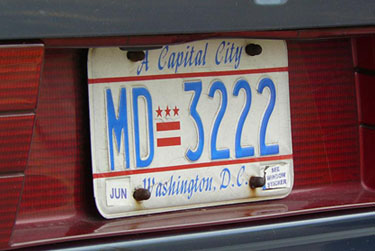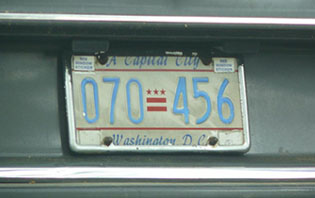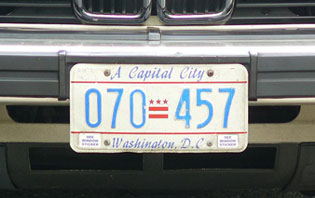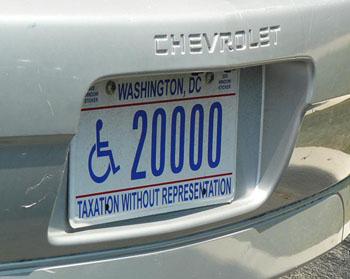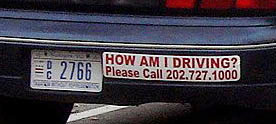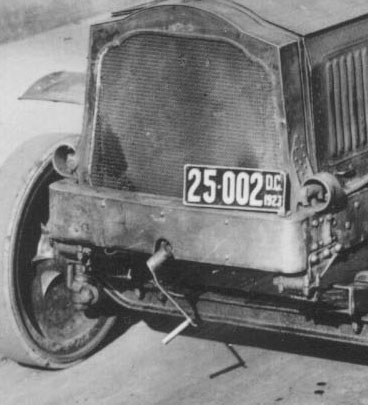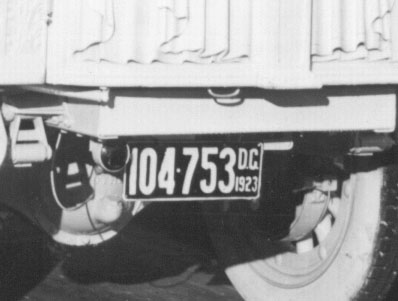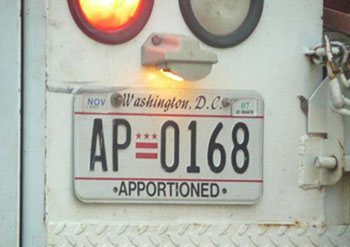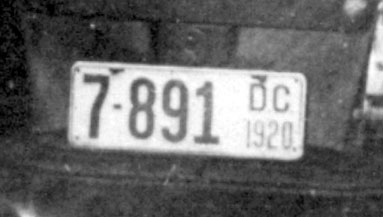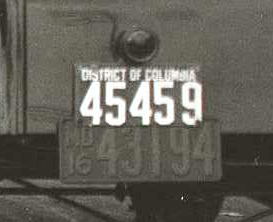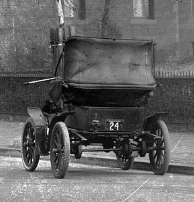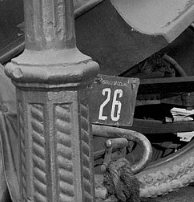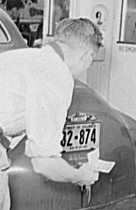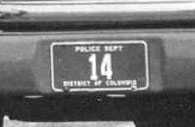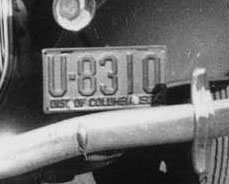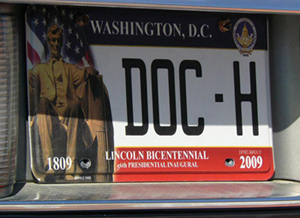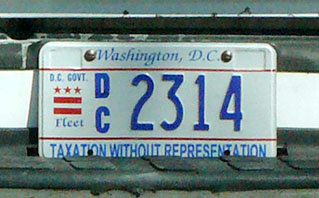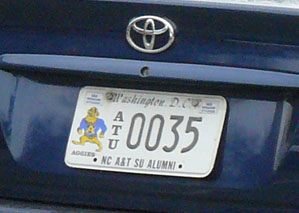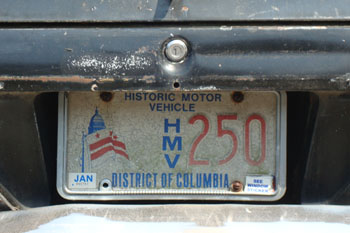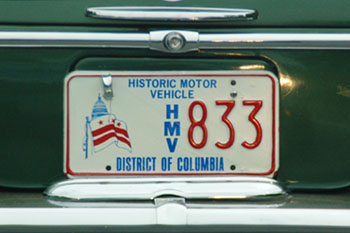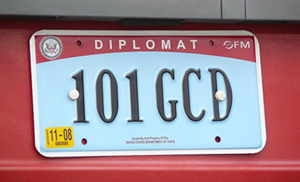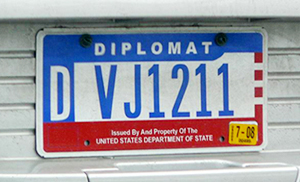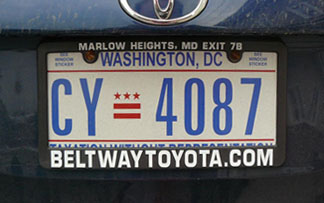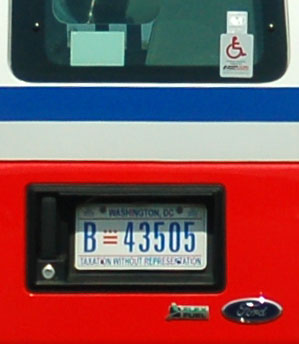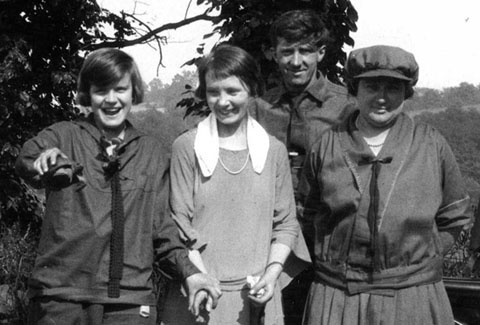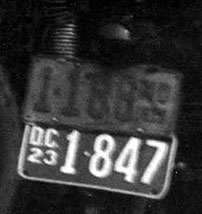DCscenes II
Taking Thee to the Streets of D.C.
|
You have to spend a considerable amount of time on the streets of the capital city to see scarce plates like these, but fortunately J. Reid Williamson is out there prowling around D.C on our behalf! He photographed these old Medical Doctor plates for DCplates.net on May 27, 2007. Left Attached to a fairly new Mercedes-Benz SLK32 AMG parked in the 1800 block of Randolph St., NW is a pair of 1974 base MD plates with the remnants of stickers 25-30 years old as proof of their age. Although it is possible that the physician to whom they are assigned received newer plates since the late 1980s and chose not to use them, it's more likely that plates of this rare type were not replaced during the last general isusance, in the mid-1980s, and hence these are the newest plates provided to this motorist. They are likely among the oldest presently in use in Washington, D.C. Right As was done with other types, MD registration numbers are thought to have been assigned beginning with 101 (i.e. MD-101) when the 1974 ("Bicentennial") base was introduced in April of that year. This Capital City plate indicates that by the mid-1980s numbers were up into the low 3000 series. It's difficult to believe that 3,000 doctors registered their cars in Washington, D.C. from 1974 through the early 1990s (when the Capital City base ceased to be issued), but unless and until information comes to light to suggest that some numbers were skipped we are left to conclude that there were indeed a lot of doctors registering their cars in the District during this period. Note how slanted the slogan is on plate no. MD-3222, which was seen parked in the 2600 block of Moreland Pl. NW. |
Most descriptions of the social characteristics of Washington include a discussion of the transient nature of its population. With so many residents in federal government service and with the changing composition of that government from year to year and administration to administration, people come and go here more than in other American cities. A small percentage are what could be considered permanent residents, and fewer still are natives. Because most vehicle owners don't stay relatively long, most District of Columbia license plates in use at any particular date are relatively new. Therefore, although Capital City plates issued beginning in 1984 to replace earlier plates may still be used, they are seldom seen. Especially scarce close to 25 years after they were distributed are 0-prefix plates, those apparently used to replace older plates (as opposed to higher-numbered plates issued in evidence of new registrations issued through mid-1991). These consecutively-numbered 1984 baseplates were photographed by J. Reid Williamson in late May 2007 in the 1800 block of Randolph St., NW. |
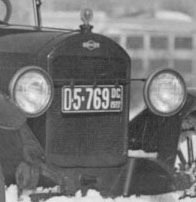 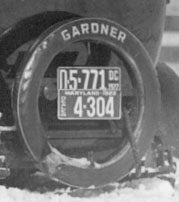 Separate images on our home and Dealer plate pages show a pair of brand new 1922 Gardner automobiles, a roadster (left) and touring car, being demonstrated in deep snow on the Mall. The home page image shows the reflecting pool and Washington Monument beyond, indicating that the images were taken at the base of the Lincoln Memorial steps. Separate images on our home and Dealer plate pages show a pair of brand new 1922 Gardner automobiles, a roadster (left) and touring car, being demonstrated in deep snow on the Mall. The home page image shows the reflecting pool and Washington Monument beyond, indicating that the images were taken at the base of the Lincoln Memorial steps.Dealer plates were issued in pairs in Washington, D.C., but only singly in Maryland for 1922. The Gardner, a product of St. Louis, was produced from 1919-1931, and more were produced in 1922, over 9,000 units, than in any other year of the make's existence. The gentleman pictured with the touring car is Mr. Wayne Smith, whose agency at 22nd and M Streets, NW, was the Gardner outlet in Washington. Note that both cars are equipped with tire chains and that the roadster's front tires are treadless. |
This wonderful old image shows a truckload of beef being delivered to Central Market in Washington in 1923. Barely visible on the side of the truck is ARMOUR AND COMPANY with the number 2353 below. The open-cab truck has solid tires that resulted in a very bumpy ride, although trucks of this era were unable to go nearly as fast as passenger cars of the day. Note the buses and trolley in the background. The 1923 license plate fastened to the front of the truck is of the same style as those issued for use on private passenger cars because specially-marked commercial/truck plates were not introduced until 1926. |
The typical expensive hearse of the 1920s was equipped with a custom-made carved wooden body mounted on heavy passenger car chassis or light-duty truck chassis. The outer body panels of this rather small, average hearse, however, are probably machine-stamped metal, and the chassis appears to be that of a light Dodge Brothers truck. Almost the entire vehicle, including sidewalls of the tires (inside and out), is painted white. Most notable in this image taken adjacent to the Neptune Fountain at the Library of Congress is the license plate, the earliest known example of a six-digit registration number. Whether numbers above 99-999 were issued in 1922 or earlier is unknown. |
Apportioned is one of the most scarce registration types presently issued simply because most commercial trucks used within the District of Columbia are not registered there. This example was photographed in traffic by J. Reid Williamson late in 2007. Note that registrations of this type are still revalidated with stickers fastened to the plate, not the vehicle's windshield. |
The identity of the young woman in this 1920 snapshot is unknown, but the car is thought to be a Dodge Brothers. |
At a well-marked railroad crossing on a journey to Frederick, Md., a Woods Dual Power idles. The date is Nov. 5, 1916, and the car is likely operated by Mr. Bruce Emerson, to whom D.C. registration no. 45459 was assigned. To reach another 1916 photograph of the same vehicle accompanied by information about the revolutionary Woods vehicle, click here to reach our Capital Traffic gallery. The embossed steel 1916 Maryland plate, weathered from 10 months of use, is yellow on black. |
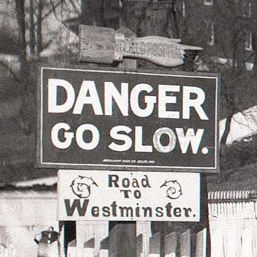 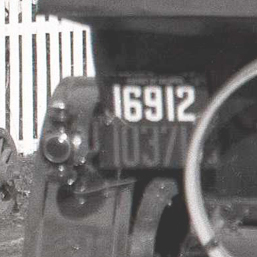 Captured on film en route to Westminster, Maryland, by Mr. Howard Fisk, Automobile Editor of the Evening Star, is a 6-cylinder Buick. With only 17 days remaining in 1913, the yellow-on-black porcelain enamel dated '13 Maryland plate would soon have to be changed, but the permanent D.C. plate could have been used for up to four more years. Click here to see more of Mr. Fisk's work. Captured on film en route to Westminster, Maryland, by Mr. Howard Fisk, Automobile Editor of the Evening Star, is a 6-cylinder Buick. With only 17 days remaining in 1913, the yellow-on-black porcelain enamel dated '13 Maryland plate would soon have to be changed, but the permanent D.C. plate could have been used for up to four more years. Click here to see more of Mr. Fisk's work. |
These two images show the lowest-numbered, and therefore earliest city-issued District of Columbia license plates captured on film. The location within Washington, date, and photographer's identity are unknown. On the right side of the full image is a vehicle with registration number 26 that has been destroyed in an accident, presumably at the dirty spot in the intersection pictured and from which it has been dragged onto the sidewalk. |
||
The little girl standing on the far right of this winter scene is looking at the back of the mangled car and sees its number 26 porcelain license plate just as it is shown in the image above. Also detailed here is a parked vehicle displaying registration number 24. Note the small back-lit street name signs at the top of the gas lamp on the right side of the full image. Unfortunately the printing is too small to identify the location of this early Washington traffic accident. Library of Congress, Prints & Publications Division [LC-F82-10297 (plate no. 24 image)] [LC-F82-10298 (plate no. 26 image)] |
||
The availability of gasoline for non-military uses was rationed during World War II, with the status of a particular motorist's eligibility to purchase this commodity indicated with gas rationing coupons. In this July 1942 image taken by photographer Albert Freeman for the U.S. Office of War Information, a gas station attendant, his left hand poised on the filler cap of a late model Dodge coupe, pauses to compare the number on the 1942 license plate and coupons in the booklet that he is holding. The sign at the sidewalk reads "Today's Quota Sold." Library of Congress, Prints & Publications Division, FSA/OWI Collection [LC-USW3-055763-D] |
From back in the day when the Metropolitan Police Dept. operated its own tow trucks, this image in front of the Capitol shows a Diamond T truck in use, c.1950. |
We don't know where this snapshot of a 1934 Plymouth was taken, but we know from the terrain that it wasn't within the District of Columbia! |
Presidential inaugural plates made for 2009 in the Lincoln Bicentennial design could legally be displayed on vehicles only in the District of Columbia. J. Reid Williamson spotted this one on Indiana Ave., NW, near police headquarters. |
The Capitol provides a dramatic backdrop for this otherwise run-of-the-mill city traffic scene in which a D.C. government vehicle is stuck in traffic. Photographed by J. Reid Williamson in late March 2009. |
This rare optional plate, for alumni of North Carolina A&T State University, was photo-graphed by J. Reid Williamson on 16th St., NW, between Euclid St. and Kalorama Rd. Meridian Hill Park is on the left in this south-facing photograph. |
HMV plate 250 had probably been in use for about 22 years when this photo was taken by Johnny Miles in 2009. The vehicle is a 1961 Chrysler, either a Windsor (1961 being the final year for the model) or a Newport (which made its debut in this model year). |
The Mercedes-Benz W111 "finback" was produced for the 1959-1968 model years. This 3.5 liter V-8 coupe was photographed while stopped at a traffic signal by Johnny Miles. |
Based upon the location and spacing of the license plate bolts on this Volvo 850SE station wagon, as well as the long license plate space crafted into the tailgate, we believe it is a European model. The registration number format of this Office of Foreign Missions (U.S. Dept. of State) plate - three serial characters, a two-letter country code, and a letter D indicating Diplomat - indicates that this is likely a New York-based registration associated with the United Nations. The GC code is believed to be assigned to Sweden. Photograph by J. Reid Williamson. |
The VJ two-letter code on this OFM plate, which was photographed by J. Reid Williamson, is thought to indicate assignment to the embassy of Brazil. |
This D.C.-plated Toyota has made it about 200 miles beyond the Beltway, to rural Monterey, Virginia, in the Allegheny Range of the Appalachian Mountains. If the Old Dominion's western border were more straight, this Highland County scene would be in West Virginia, the border of which is less than 15 miles from the junction of U.S. highways 220 and 250 (in two directions). Photographed during 2008 by J. Reid Williamson, who notes that Highland County (pop. 2,500) has the highest average elevation of any county in Virginia. |
The Capital Region's public transit system, METRO, operates a system of trains, subways, buses, and other vehicles, such as this van specially equipped to accommodate physically disabled individuals, in Maryland, Virginia, and the District of Columbia. This image, taken by Johnny Miles in 2010, shows a D.C.-registered MetroAccess van as it crosses the Potomac into the District on the Arlington Memorial Bridge, with the Lincoln Memorial in the background. |
|
||
A tortoise found alongside a country road was the source of enjoyment for members of a motorcycling party when this photo was taken. Unfortunately the location and date of this scene are unknown, but we know that it was during 1923 by the Maryland and District of Columbia license plates on the cycle at the right. This is the last year the that vehicles based in either jurisdiction would have been registered in the other, for a reciprocity agreement was reached at the end of the year (as discussed here). |
||
|
This page last updated on December 31, 2017 |
 |
|
copyright 2006-2018 Eastern Seaboard Press Information and images on this Web site may not be copied or reproduced in any manner without consent of the owner. For information, send an e-mail to admin@DCplates.net |














